Description
Get your degree with ease by using our files. We do not keep any logs and we do not log any information. What does this mean for you? This means, your order is completely anonymous and confidential. Part of our service allows you to purchase these files without anyone else knowing. There is no risk and you have nothing to lose. If you are using this very text book in school right now, then you will need this nursing test bank to learn important core knowledge so you can be the ultimate nurse. Add this product to your cart and checkout to receive the download for your nursing test bank for Pharmacology Clear and Simple A Guide to Drug 2nd Edition Watkins Test Bank
Do you have any questions? Would you like a sample sent to you? Just send us an email at inquiry@testbankcorp.com (no spaces). We will respond as soon as possible.
== SAMPLE ==
Chapter 2. Basics of Pharmacology
Multiple Choice
Identify the choice that best completes the statement or answers the question.
____ 1. The nurse is preparing to apply valacyclovir (Valtrex) ointment to the shingles lesions located across a client’s left side and lower back. Which of the following actions should the nurse take first?
A. Place the patient in a supine position.
B. Determine when the rash was first noted.
C. Ensure that the skin is clean and dry.
D. Take the patient’s vital signs.
____ 2. The nurse is providing care for a client at 32 weeks’ gestation who started low-molecular heparin injections after developing a deep vein thrombosis. The client asks the nurse, “Why do I have to take a shot? Why can’t I take the blood clot medicine that my dad takes orally?” Which of the following responses by the nurse is best?
A. “Anything that is fat-soluble, including warfarin (Coumadin), is able to cross the placental barrier. Heparin is not fat-soluble so it doesn’t cross the barrier well.”
B. “The placenta is easily crossed by anything you take by mouth while you are pregnant, but not by things absorbed in other ways.”
C. “Only water-soluble substances such as vitamins can cross the placental barrier, so you could take either medication, but heparin is cheaper.”
D. “They are the same medication, but the shot is absorbed faster than the pill so the doctor wants you to take daily shots.”
____ 3. The nurse is providing care to a client with HIV who has been prescribed fosamprenavir (Lexiva). Which of the following statements by the client indicates that further teaching is necessary?
A. “The metabolites of this medication may be excreted in active form.”
B. “I’m glad my kidneys work so well; otherwise the medication wouldn’t work.”
C. “This drug actually has to be broken down by my body to fight the virus.”
D. “Isn’t it fascinating that my liver has to metabolize the drug for it to work?”
____ 4. The nurse is working with a client who was recently started on insulin therapy. The client’s young daughter asks, “Why do you have to give her a shot? Why can’t you just give her a pill?” Which of the following responses by the nurse is best?
A. “Our bodies make insulin normally, so it is a liquid medication.”
B. “We do have diabetic medications in pill form. I’m not sure why the doctor ordered it this way for your mom.”
C. “Insulin is manufactured and given this way so it absorbs more rapidly into the body.”
D. “The acid in your mother’s stomach would destroy this medication, so it can’t be swallowed.”
____ 5. The nurse is providing care for a 48-year-old male on the surgical unit. Gentamicin (Garamycin) 2 mg/kg every 8 hours has been started. The nurse would be most concerned by which of the following findings?
A. Blood levels have been ordered every 24 hours
B. The patient’s EGFR = 40 mL/min
C. The patient’s hemoglobin = 11.8 g/dL
D. The patient’s WBC = 14,000 c/mm3
____ 6. A 16-year-old client comes to the urgent care clinic with symptoms of tonsillitis. The client tells the nurse she takes tetracycline (Doxycycline) daily for the treatment of acne. The nurse would be most concerned if the health care provider prescribed which of the following?
A. Amoxicillin clavulanate (Augmentin)
B. Cefdinir (Omnicef)
C. Cefixime (Suprax)
D. Ciprofloxacin (Cipro)
____ 7. The nurse is providing care for a client experiencing muscle spasms. The physician has ordered cyclobenzaprine (Flexeril). The nurse would inform the client to anticipate which of the following side effects?
A. Hypocalcemia and hypotension
B. Dizziness and drowsiness
C. Nausea and headache
D. Flaccidity and urinary retention
____ 8. While caring for clients on the medical unit, the nurse would see which of the following clients first?
A. A 28-year-old patient with HIV who has a temperature of 99.2°F
B. A 54-year-old patient with diverticulitis whose diet was just advanced to solid food
C. A 61-year-old patient who takes ibuprofen for arthritis complaining of severe stomach pain
D. A 37-year-old patient with a kidney stone who is due for pain medication in 20 minutes
____ 9. While preparing to provide a patient admitted to the hospital for a laparoscopic hysterectomy the prescribed dose of ibuprofen (Motrin) 800 mg orally, which of the following actions would take highest priority?
A. Determine if the client has eaten within the past hour.
B. Assess the client’s vaginal discharge.
C. Help the client ambulate in the hall.
D. Evaluate the client’s most recent renal panel labs.
____ 10. The nurse is providing care for clients on the orthopedic unit. Which of the following assessment findings is most concerning to the nurse?
A. A client who takes lisinopril (Zestril) and is complaining of limited range of motion after shoulder surgery
B. A client with a fractured pelvis who takes warfarin sodium (Coumadin) and reports having a black tarry stool during the night
C. A client 2 days post-op for knee replacement who takes hydrocodone/acetaminophen (Vicodin) and refused to have labs drawn this morning
D. A client 4 days after hip replacement surgery taking omeprazole (Prilosec) who ordered spinach for dinner
____ 11. While working in the neonatal intensive care unit, the nurse notes an infant’s oxygen saturation has been 98% for the past 4 hours. The infant has been receiving oxygen at 4 L. Which of the following actions by the nurse is best?
A. Turn the oxygen level down to 3 L and monitor closely to reduce the risk of eye damage.
B. Leave the oxygen level at its current rate to reduce the risk of lung damage.
C. Turn the oxygen level down to 2 L and monitor closely to evaluate the infant’s readiness for transfer out of the ICU.
D. Leave the oxygen level at its current rate and inform the parents the baby will need supplemental oxygen at home.
Multiple Response
Identify one or more choices that best complete the statement or answer the question.
____ 1. While providing oral medications, the nurse recognizes which of the following is true regarding the absorption rate of a medication? (Select all that apply.)
A. The drug’s level of fat solubility should be high to ensure absorption.
B. A medication will be more readily absorbed if it has a high pH.
C. A drug will be more readily absorbed if it is acidic in nature.
D. Absorption will be more rapid if it is provided in liquid form.
E. Absorption is slower in the presence of food.
F. A lozenge should be chewed to release the maximum amount of medication.
____ 2. While caring for multiple clients on the medical/surgical unit, the nurse would monitor which of the following individuals for potential liver toxicity? (Select all that apply.)
A. A 14-year-old patient taking atomoxetine (Strattera) who has a history of ADHD
B. A 44-year-old patient admitted for pneumonia who has been taking acetaminophen
(Tylenol)
C. A 63-year-old patient with a history of atrial fibrillation who has an irregular apical
pulse
D. A 19-year-old patient with a history of alcohol abuse admitted for a tonsillectomy
E. A 71-year-old patient with a history of tuberculosis who took isoniazid (Laniazid)
F. A 15-year-old patient who took multiple aspirin as part of a suicide attempt
____ 3. While working in the gastrointestinal diagnostic clinic, the nurse identifies which of the following individuals as at high risk for developing a gastric ulcer? (Select all that apply.)
A. A 41-year-old patient with a family history of Crohn’s disease
B. A 54-year-old patient who reports smoking 1.5 packs of cigarettes/day for the past 40 years
C. A 29-year-old patient taking misoprostol (Cytotec)
D. A 16-year-old patient with a 6-month history of bulimia
E. A 44-year-old patient who reports taking ibuprofen (Advil) daily for low back pain
____ 4. While providing medications to clients in the long-term care facility, which of the following actions would the nurse use to prevent gastrointestinal side effects? (Select all that apply.)
A. Give clients yogurt to prevent diarrhea.
B. Increase client intake of fiber to reduce gastric motility.
C. Provide milk or food with some medications to reduce the occurrence of nausea.
D. Improve absorption of the medication by giving it at night with a large snack.
E. Prevent constipation by providing fiber laxatives.
Chapter 2. Basics of Pharmacology
Answer Section
MULTIPLE CHOICE
1. ANS: C PTS: 1 DIF: Moderate
TOP: Therapeutic Classification: Medication Provision; antivirals
KEY: Analysis MSC: NCLEX Category: Pharmacological Therapies
NOT: See Absorption (p. 15). When administering an ointment for a rash, make sure the skin is clean and dry.
2. ANS: A PTS: 1 DIF: Moderate
TOP: Therapeutic Classification: Anticoagulant therapy KEY: Analysis
MSC: NCLEX Category: Pharmacological Therapies
NOT: See Distribution (p. 16): The blood-placental barrier helps to filter drugs and other substances passing from mother to fetus. Most lipid-soluble drugs readily cross this barrier but water-soluble drugs do not. Warfarin (Coumadin) is fat-soluble and crosses the placental barrier while heparin does not. They are not the same medication and cost is not part of the therapeutic decision.
3. ANS: B PTS: 1 DIF: Moderate
TOP: Therapeutic Classification: Medication Administration; antivirals
KEY: Analysis MSC: NCLEX Category: Pharmacological Therapies
NOT: See Metabolism (p. 16): The liver does most of the work of drug metabolism. In some instances, a drug is administered in its inactive form to become activated through metabolism. This category of drugs is known as prodrugs. An example of a prodrug is fosamprenavir (Lexiva).
4. ANS: D PTS: 1 DIF: Moderate
TOP: Therapeutic Classification: Antidiabetics KEY: Analysis
MSC: NCLEX Category: Pharmacological Therapies
NOT: See Metabolism (p. 16): Insulin given by mouth is virtually useless; stomach acid breaks down insulin to an inactive form before it can be absorbed into the bloodstream. Oral diabetic medications are not forms of insulin; they stimulate the pancreas to release insulin.
5. ANS: B PTS: 1 DIF: Moderate
TOP: Therapeutic Classification: Antibiotics KEY: Analysis
MSC: NCLEX Category: Pharmacological Therapies
NOT: See Issues Affecting the Drug Cycle (p. 17): Gentamicin is known to be both nephrotoxic (toxic to the kidneys) and ototoxic (toxic to the ears). Thus, kidney function and hearing would be monitored closely. The EGFR is the best measurement of kidney function. Normal value is >60 mL/min. While the client’s hemoglobin is low, the kidney function is more concerning. An elevated WBC count is expected in the presence of an infection, which is the reason antibiotic therapy is provided. Routine blood levels to monitor drug dosage is expected to help prevent toxicity.
6. ANS: A PTS: 1 DIF: Hard
TOP: Therapeutic Classification: Antibiotics KEY: Application
MSC: NCLEX Category: Pharmacological Therapies
NOT: See Issues Affecting Drug Cycle (p. 18): Antagonist drugs do the opposite by rendering another drug less powerful. The antibiotic tetracycline becomes ineffective when it is taken with penicillin. Amoxicillin clavulanate is a penicillin derivative.
7. ANS: B PTS: 1 DIF: Moderate
TOP: Therapeutic Classification: Muscle relaxants KEY: Application
MSC: NCLEX Category: Pharmacological Therapies
NOT: See The Importance of Side Effects (p. 18): Muscle relaxants such as Flexeril cause dizziness and drowsiness in addition to their intended actions.
8. ANS: C PTS: 1 DIF: Moderate
TOP: Therapeutic Classification: Anti-inflammatory agents KEY: Analysis
MSC: NCLEX Category: Pharmacological Therapies
NOT: See Side Effects (p. 19): Clients who take nonsteroidal anti-inflammatory medications on a long-term basis run the risk of developing ulcers. This client is the most unstable and should be seen first.
9. ANS: D PTS: 1 DIF: Moderate
TOP: Therapeutic Classification: Anti-inflammatory agents KEY: Analysis
MSC: NCLEX Category: Pharmacological Therapies
NOT: See Side Effects (p. 19): If kidney damage or impairment is suspected, BUN levels may be monitored to evaluate kidney function. Clients taking anti-inflammatory agents are at increased risk of kidney damage because these drugs are primarily metabolized through the kidneys instead of the liver.
10. ANS: B PTS: 1 DIF: Hard
TOP: Therapeutic Classification: Anticoagulants KEY: Analysis
MSC: NCLEX Category: Pharmacological Therapies
NOT: See Side Effects (p. 19): Any patient taking an anticoagulant such as Coumadin to decrease clotting should be carefully monitored for signs of bleeding, including dark tarry stools. Coumadin levels should be monitored to ensure the drug level is therapeutic but not toxic.
11. ANS: A PTS: 1 DIF: Moderate TOP: Therapeutic Classification: NA
KEY: Analysis MSC: NCLEX Category: Pharmacological Therapies
NOT: See Side Effects (p. 19): A serious problem is the use of oxygen in premature infants. At high doses, oxygen is very damaging to the eyes. For this reason, oxygen is now used at the lowest therapeutic dose possible for all age groups. This oxygen saturation level is very good, has been stable for 4 hours, and thus a trial on lower concentrations is warranted. Transfer out of ICU will depend on additional factors. Long-term use of oxygen can’t be determined at this time.
MULTIPLE RESPONSE
1. ANS: A, C, D, E PTS: 1 DIF: Hard TOP: Therapeutic Classification: NA
KEY: Analysis MSC: NCLEX Category: Pharmacological Therapies
NOT: See Absorption (p. 15): The more soluble a medication is in fat or lipids, the more easily it is absorbed through the stomach. Medications with a low (acidic) pH are easily absorbed in the stomach. Liquid medications act faster than pills. A large amount of food slows absorption. If a patient sucks on a lozenge, more medication is released in the mouth than if the lozenge is chewed or swallowed.
2. ANS: B, D, E, F PTS: 1 DIF: Hard
TOP: Therapeutic Classification: Medication Administration KEY: Analysis
MSC: NCLEX Category: Pharmacological Therapies
NOT: See Side Effects (p. 18): Alcohol, acetaminophen, isoniazid, and aspirin can cause liver damage.
3. ANS: B, E PTS: 1 DIF: Moderate
TOP: Therapeutic Classification: Anti-inflammatory agents KEY: Analysis
MSC: NCLEX Category: Pharmacological Therapies
NOT: See Side Effects (p. 19): The synthetic prostaglandin misoprostol (Cytotec) may be given to prevent the development of ulcers. Clients taking anti-inflammatory agents such as ibuprofen are at increased risk for ulcer formation. These patients are also urged to stop smoking to reduce the risk of ulcers.
4. ANS: A, C, E PTS: 1 DIF: Moderate
TOP: Therapeutic Classification: Medication Administration KEY: Analysis
MSC: NCLEX Category: Pharmacological Therapies
NOT: See Side Effects (p. 19): Side effects are managed on an individual basis. Some medications require ingestion with milk or food. For certain drugs, adding yogurt to the diet is suggested to prevent diarrhea, and other drugs may require the addition of a high-fiber laxative to the diet to prevent constipation. Fiber will increase GI motility. The presence of food slows absorption rates.

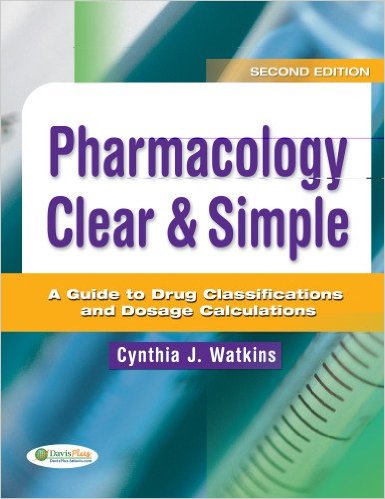
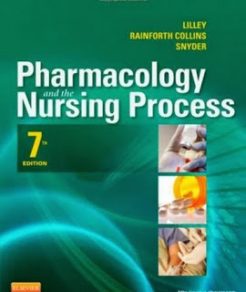
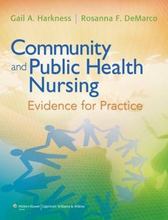
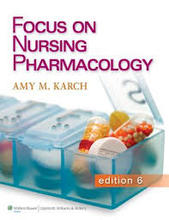
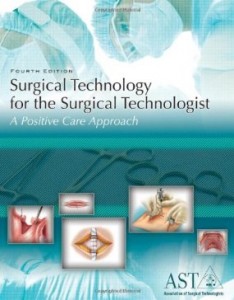

Reviews
There are no reviews yet.